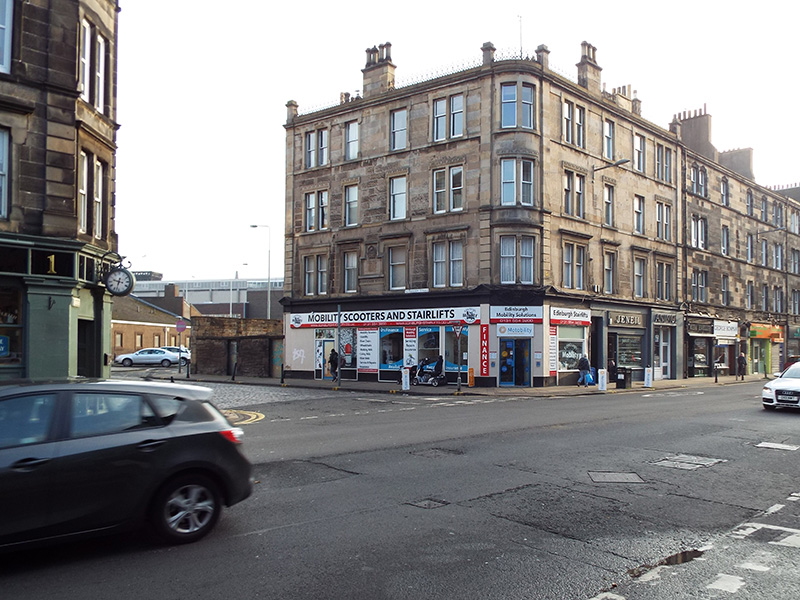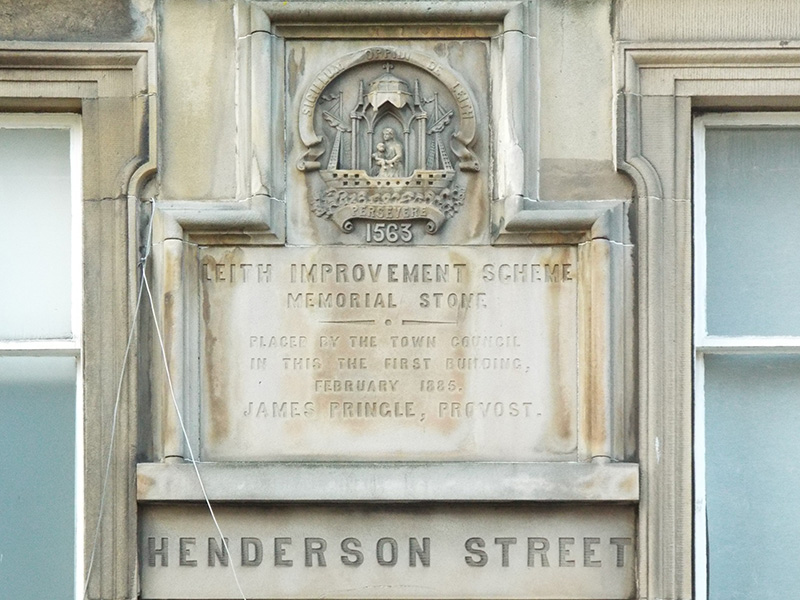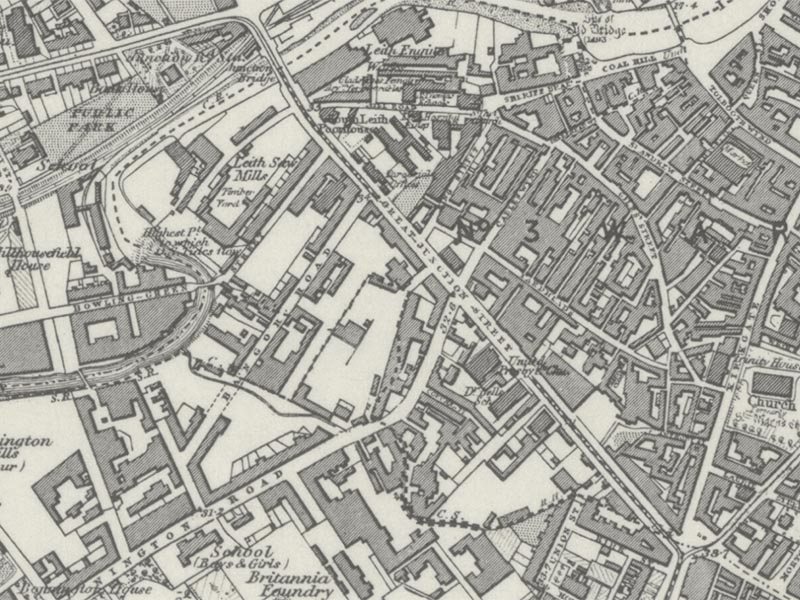Leith Improvement Scheme

By 1880, Great Junction Street had been successful in taking road traffic between the town and the docks away from the older routes. But the docks had expanded since Great Junction Street was built and traffic had increased as a result. The routes down Constitution Street and the Kirkgate were unsuitable for heavy traffic to the docks, which was in addition to vehicles delivering to premises in these streets.
At the same time, there was a problem housing the growing population, including construction workers building the new docks and those employed in the transit warehouses in the docks. Existing houses were sub-divided into flats and ‘single-ends’ but the sanitary provision that was needed was lacking.
It was seen that improvements had to be made in the access to the docks, and in the provision of adequate housing for both resident and itinerant workers along with the upgrading of the sanitary conditions.
‘Improvement Schemes’ were not new to Leith, indeed it could be said that Leith did not evolve, rather it grew and changed as the result of such schemes. In 1877 a plan was conceived to divide Leith into five sectors, one of which we will deal with here, although the others had equal importance in their own way to the other parts of the town involved.
In 1880, the Leith Improvement Scheme Confirmation Act was passed and the Improvement Scheme was put into action. Under this scheme a large area in Leith, between the Shore and the Kirkgate, was to be demolished, and spacious new tenements built. A new road was also to be formed to provide better access to the docks.
The new road was to run at right angles to Great Junction Street at Yardheads passing Giles Street and St Andrews Street, and ending at Tolbooth Wynd where it met the Shore. The Shore was and still remains an important part of Leith, as much for its architecture and history as for its important location along the west side of the Water of Leith, past Bernard Street to what was the original harbour.
The construction of the new street would necessitate the removal and demolition of some of the older dwellings in closes, lanes, and courts to make way by opening up the part of the town through which it would pass. Work started on the first section in 1883 between Great Junction Street and Yardheads. The official Memorial Stone can still be seen today above a shop which stands on the west-most corner.

Some 80 homes had to be removed and with them more than 400 inhabitants. Throughout the whole project another 700 houses would be brought down, home to more than 2100 inhabitants. That is an estimated figure, since many dwellings housed multiple families.
The parliamentary estimate for the scheme was £98,000. This was to be raised by the selling of feus etc. previously payable to the Parliament and town. The balance of £52,000 was to be paid by the rate payers.
In 1881 the Public Loan Commissioners lent £70,000 to enable the scheme to be completed, however when the actual total sum for the scheme was realised it was still some £28,000 short of funds. This was also to be raised by the taxpayers, and an assessment was made stating that an additional 3d (threepence) per £ was needed to pay the balance, instead of the original assessment of twopence per £ for 30 years.
The demolition of so many dwellings, shops and offices would mean that many artefacts, architectural embellishments and sculptured stones would be lost to Leith, and the Town Council made it a condition that all such items removed during the project should be kept and handed over to the town for preservation. Some can be seen today adorning the newer buildings, but it seems that not all the historic remnants were indeed preserved.
The new road was named Henderson Street, after the architect responsible for the design and building of St Thomas’ Church in Mill Lane, and associated buildings.


The objective of this new thoroughfare, as noted earlier, was to further relieve the traffic flow between the docks and the Town, going on to the city. This was only marginally successful. The traffic using this route would miss the narrow Constitution Street and the almost impassable Tollbooth Wynd, and avoid travelling the entire length of Great and North Junction Streets, where they would have to travel within the dock area to their dockside or warehouse destination. However another bottleneck emerged from the additional traffic using the new road coming to a standstill where the road joined the Shore at Tolbooth Wynd.
There were two choices, either to Cross Ballantyne’s Bridge to Bridge Street and then carry on through Dock Place or back to the Dock entrance at the end of North Junction Street, an unnecessary detour, or to Carry on down the Shore and across Bernard Street to access the docks via Tower Street.
In the seventy years or so following the creation of Great Junction Street most of the expansion within the docks was at the western end.
However, new houses were urgently needed and for that reason alone the scheme proved worthwhile. The new sanitation resulted a report from the Registrar General’s Office commending Leith as one of the healthiest towns in Scotland. Little did he know of the impending epidemic of smallpox, which was to ravish the town just a few years later. Leith should have been ready to deal with this, having gone through the plague in the 16th Century, but records and communications were not of the highest standards, and the people of Leith were to suffer another blow in their growth and advancement. It could only be hoped that the development of newer standards of dwelling places would at least reduce the role of the Water of Leith as a communal sewer.